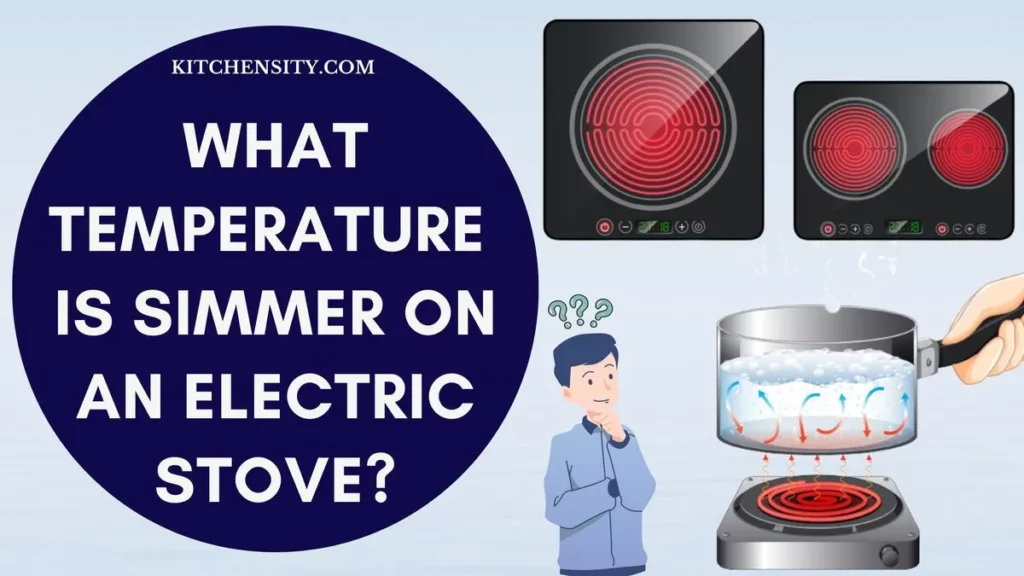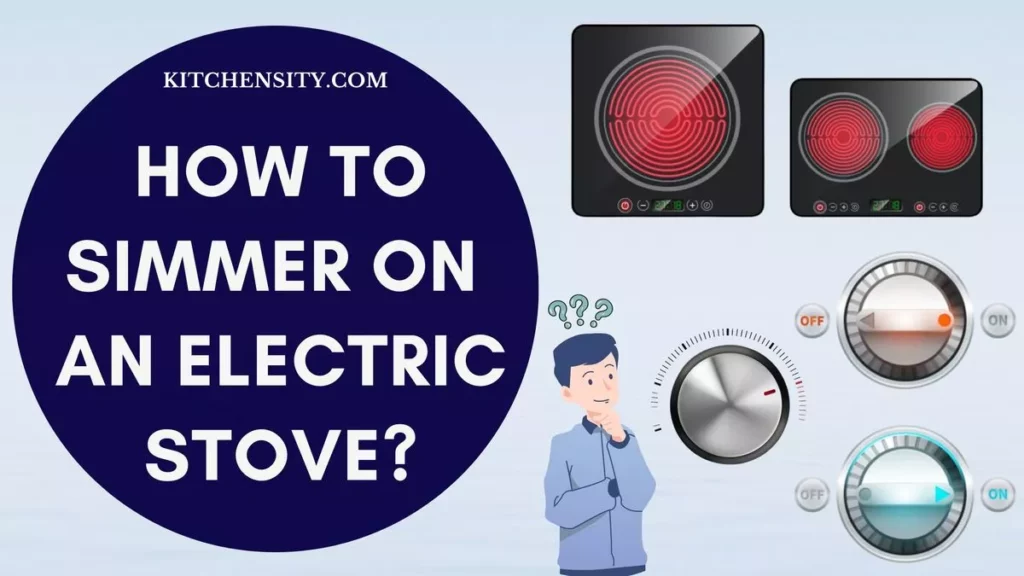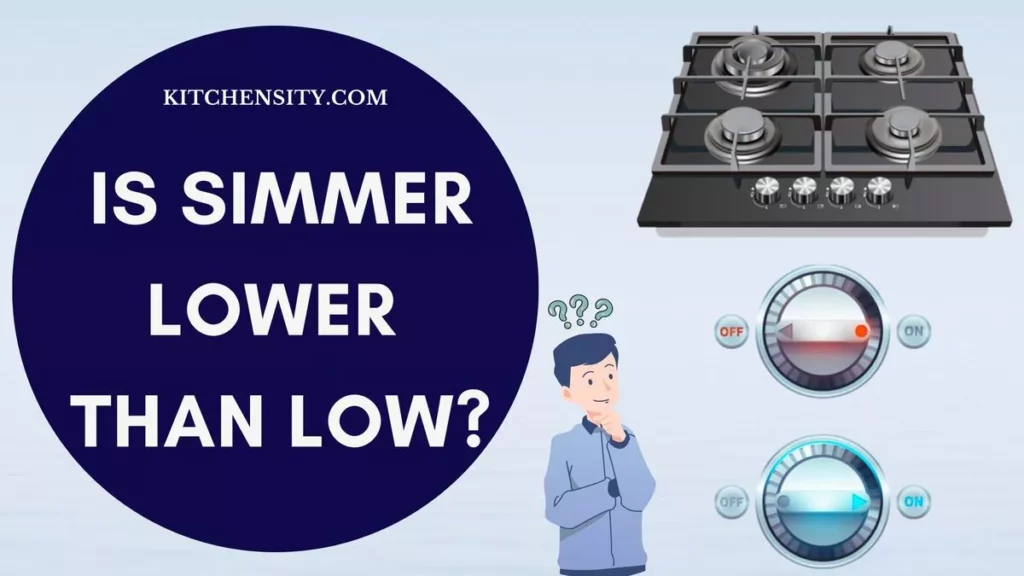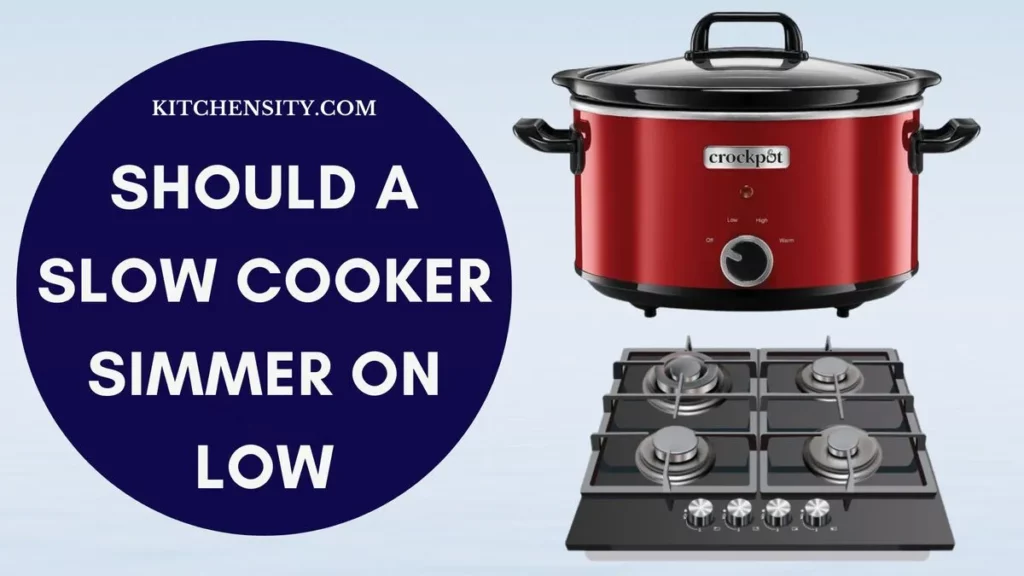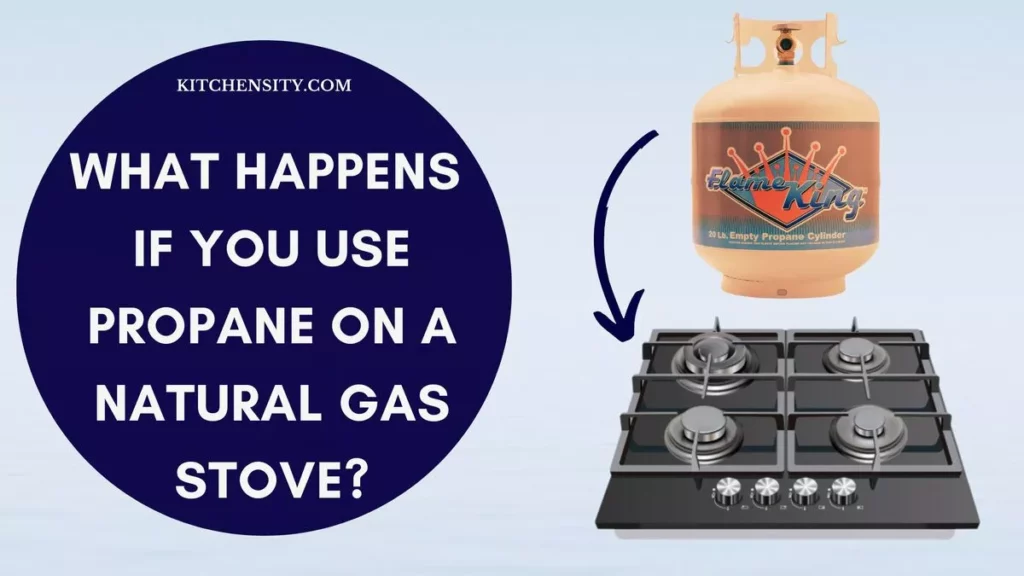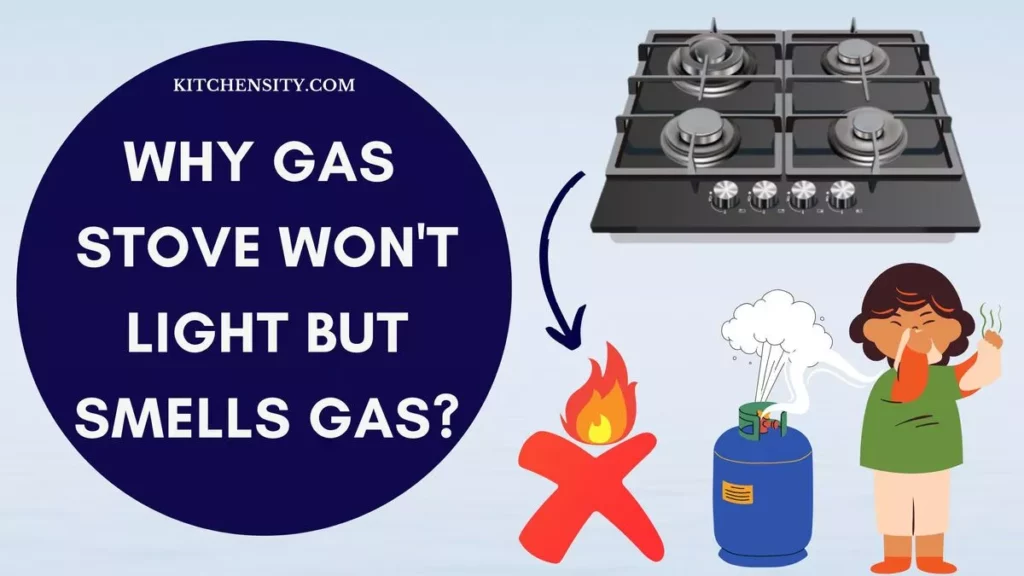Have you ever wondered just how hot those electric stove burners can get? Electric stoves are kitchen essentials, but understanding their heat levels and how to use them effectively can take your cooking skills to the next level.
Electric stove burners can get quite hot, with temperatures ranging from about 120°F to 450°F (49°C to 232°C), depending on the setting. The highest setting, often labeled as “High,” reaches the maximum temperature (450°F), ideal for tasks like boiling water rapidly or searing meat.
Lower settings offer a gentler, more controlled heat, making electric stoves versatile for various cooking techniques.
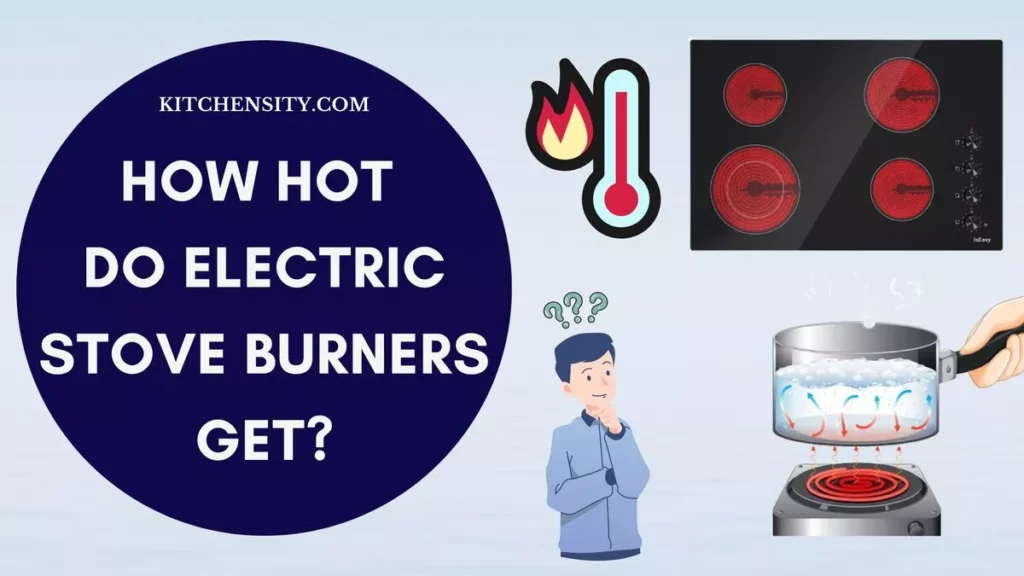
Table of Contents
- 1 What Are Electric Stove Burners?
- 2 Measuring Temperature On Electric Stove Burners.
- 3 Typical Temperature Ranges On Electric Stove Burners
- 4 Factors Affecting Burner Temperature.
- 5 Stove Top Temperature Chart
- 6 What Temperature Is High On The Stove Burner?
- 7 Various Cooking Techniques On Electric Stove Burners
- 8 Safety Precautions While Using Electric Stoves.
- 9 Tips On Energy Efficiency For Cooking On Electric Stoves.
- 10 Final Verdict On How Hot Do Electric Stove Burners Get?
- 11 FAQs (Frequently Asked Questions).
- 11.1 How Hot Does An Electric Stove Get On High?
- 11.2 How Can I Prevent Food From Sticking To The Electric Stove Burners?
- 11.3 Can I Use Glass Cookware On Electric Stove Burners?
- 11.4 What Should I Do If My Electric Stove Burner Isn’t Heating Properly?
- 11.5 Are Induction Stoves Hotter Than Traditional Electric Stoves?
- 11.6 How Can I Clean Burnt-On Residue From Electric Stove Burners?
What Are Electric Stove Burners?
Electric stove burners are the heating elements on an electric stove that provide the heat necessary for cooking. These burners can come in different forms, such as coils, solid disks, or smooth ceramic glass tops, and they are powered by electricity. When you turn on an electric stove burner, it heats up rapidly, transferring heat to the cookware placed on top of it. Electric stove burners are a fundamental part of electric stoves, providing the heat needed to cook food.
Also Read – Why Gas Stove Won’t Light But Smells Gas?
How Does An Electric Stove Burner Work?
Electric stove burners operate by converting electrical energy into heat through a heating element. This element, typically made of coiled metal or a flat surface like ceramic glass, is concealed beneath the burner’s surface. When you turn on the burner, electrical current flows through the heating element, encountering resistance that causes rapid heating. The intense heat generated is then transferred to cookware on the burner, cooking the food inside through direct contact.
The burner’s temperature can be adjusted by regulating the flow of electricity, offering precise control for different cooking needs. Electric stoves often include safety features like indicator lights for hot burners and timers for added safety.
Also Read – What Happens If You Use Propane On A Natural Gas Stove?
Measuring Temperature On Electric Stove Burners.
Accurately measuring the temperature on electric stove burners is essential for achieving precise cooking results. Understanding temperature scales and the difference between surface and internal temperatures can greatly enhance your culinary skills.
Degrees Fahrenheit Vs. Celsius.
- Degrees Fahrenheit: In the United States, Fahrenheit is the standard temperature scale used for cooking. It’s denoted as °F. On most electric stoves, you’ll find temperature settings marked in degrees Fahrenheit. Familiarizing yourself with this scale is essential for following recipes and achieving the desired level of doneness.
- Degrees Celsius: In many other parts of the world, including Europe and most scientific contexts, Celsius is the standard temperature scale. It’s denoted as °C. If you encounter a recipe or a cooking guide that uses Celsius, it’s important to be able to convert between Fahrenheit and Celsius to adjust your electric stove accordingly.
Surface Temperature Vs. Internal Temperature.
When dealing with electric stove burners, it’s crucial to differentiate between surface temperature (the heat you feel when touching the burner) and the internal temperature of your food. Here’s why:
- Surface Temperature: This is the temperature of the burner’s surface itself. When you turn on an electric stove burner, it gradually heats up, and you can gauge its temperature by hovering your hand a few inches above it. It helps you assess how quickly your cookware is heating up.
- Internal Temperature: When you’re cooking food, what matters most is the internal temperature of the ingredients. For example, when cooking meats, you need to reach specific internal temperatures to ensure they are safe to eat. To measure internal temperature, use a kitchen thermometer inserted into the thickest part of the food.
By being aware of these temperature aspects, you can cook with precision and confidence. Always follow recipes that specify cooking temperatures in either Fahrenheit or Celsius and use the appropriate tools, such as meat thermometers, to determine the internal temperature of your dishes accurately. This ensures that your meals are not only delicious but also safe to consume.
“Temperature ranges can vary depending on the brand, model, and specific burner size/type. Always consult your stove’s manual for accurate temperature information.” – National Kitchen & Bath Association.
Also Read – Master Medium Heat On A Stove
Typical Temperature Ranges On Electric Stove Burners
Electric stoves offer a range of heat levels, from gentle simmering to high-intensity searing. Here, we’ll elaborate on the typical temperature ranges you can expect:
Low Heat Settings.
- Temperature Range: The low heat setting on an electric stove burner typically ranges from 120°F to 150°F (49°C to 66°C).
- Ideal Uses: This setting is perfect for keeping food warm without overcooking it. It’s also well-suited for tasks that require gentle and prolonged heating, such as simmering sauces, melting chocolate, or keeping soups and stews at a consistent temperature.
- Cooking Techniques: Use the low heat setting when you want to maintain the integrity of delicate ingredients or when you need to keep dishes warm for an extended period.
Medium Heat Settings.
- Temperature Range: Medium heat on an electric stove burner falls between 200°F to 250°F (93°C to 121°C).
- Ideal Uses: This setting is versatile and suitable for a wide range of cooking tasks. It’s great for sautéing vegetables, simmering sauces, and cooking dishes that require steady and moderate heat.
- Cooking Techniques: When you need to cook ingredients evenly without scorching or rapid boiling, the medium heat setting is your go-to option.
High Heat Settings.
- Temperature Range: The high heat setting on an electric stove burner can reach temperatures between 350°F to 450°F (177°C to 232°C).
- Ideal Uses: High heat is essential for tasks that demand rapid and intense cooking. This includes boiling water quickly, searing meats to create a flavorful crust, and stir-frying vegetables.
- Cooking Techniques: When you want to achieve a beautifully seared steak, perfectly crispy stir-fried vegetables, or rapidly boil water for pasta, the high heat setting provides the necessary intensity.
It’s worth noting that some electric stoves may have additional settings or specific temperature values, so referring to your stove’s user manual can provide further insights into its capabilities.
Also Read – Should A Slow Cooker Simmer On Low?
Factors Affecting Burner Temperature.
The temperature produced by an electric stove burner is influenced by several factors, all of which can impact your cooking experience. Understanding these factors allows you to optimize your cooking results and ensure safety:
1. Cookware Material
- Conductivity: The type of cookware you use significantly affects how quickly and evenly heat is transferred from the burner to your food. Materials like copper and aluminum conduct heat very efficiently and respond rapidly to changes in temperature. On the other hand, materials like cast iron retain heat well but heat up more slowly.
- Non-Stick Coatings: Cookware with non-stick coatings tends to require lower heat settings as they distribute heat evenly and prevent food from sticking to the surface. This can affect how hot the burner needs to be for various cooking tasks.
2. Burner Size
The size of the burner you select should match the size of your cookware. Using a small pot on a large burner can result in uneven heating, while using a large pot on a small burner may take longer to reach the desired temperature. Matching burner size to cookware promotes efficient and even cooking.
3. Electricity Voltage
- Voltage Supply: The voltage supplied to your electric stove can impact the burner’s heating capabilities. Ensure that your stove is receiving the correct voltage specified by the manufacturer for optimal performance. Variations in voltage can affect how quickly burners heat up and maintain temperature.
- Wiring And Outlet Condition: Faulty wiring or outlet issues can also lead to inconsistent burner performance. Regularly inspect and maintain the electrical connections to ensure they are functioning correctly.
For example, choosing the right cookware for your specific dish, matching pot size to burner size, and ensuring a stable electrical supply can all contribute to more efficient and precise cooking.
Also, being aware of these factors can enhance safety in the kitchen by preventing overheating and potential damage to your cookware and stove.
Also Read – Is Simmer Lower Than Low?
Stove Top Temperature Chart
Here’s a stovetop temperature chart to help you understand and manage the different temperature ranges on electric stove burners:
| Heat Setting | Fahrenheit (°F) | Celsius (°C) | Description | Best Uses |
| Low Heat | 120°F – 150°F | 49°C – 66°C | Gentle and minimal heat, ideal for simmering | Keeping food warm, gently simmering |
| Medium-Low | 160°F – 190°F | 71°C – 88°C | Low to moderate heat for slower cooking | Slow-cooking, delicate dishes |
| Medium Heat | 200°F – 250°F | 93°C – 121°C | Moderate heat for most cooking tasks | Sautéing, simmering, general cooking |
| Medium-High | 260°F – 290°F | 127°C – 143°C | Moderate to high heat for faster cooking | Frying, searing, stir-frying |
| High Heat | 350°F – 450°F | 177°C – 232°C | High heat for rapid cooking and boiling | Boiling, searing, quick stir-frying |
Additional Tips:
- Low Heat: Ideal for keeping dishes warm without further cooking. It’s also suitable for gentle simmering and melting tasks.
- Medium-Low: Use this setting for slow-cooking and delicate dishes that require longer cooking times.
- Medium Heat: Versatile for most cooking tasks, including sautéing, simmering, and general cooking.
- Medium-High: Suitable for faster cooking methods like frying, searing, and stir-frying.
- High Heat: Use for rapid boiling, searing meats to create a crust, and quick stir-frying. Be cautious as this setting can get very hot.
Remember that the actual temperature of your electric stove burners may vary depending on factors such as cookware, stove model, and your specific settings. It’s essential to monitor your cooking closely and adjust the heat as needed to achieve the desired results for your dishes.
Also Read – How To Simmer On An Electric Stove?
What Temperature Is High On The Stove Burner?
High heat on a stove burner typically ranges from 350°F to 450°F (177°C to 232°C). This temperature range is suitable for rapid cooking methods such as boiling water quickly, searing meats to create a flavorful crust, and stir-frying. It’s the hottest setting on most electric stove burners and is used for tasks that require intense and immediate heat.
However, it’s important to note that the actual temperature can vary depending on the stove’s make and model, so it’s a good practice to use a kitchen thermometer if precise temperature control is essential for your cooking.
Various Cooking Techniques On Electric Stove Burners
Electric stove burners provide a versatile platform for various cooking techniques. Mastering these techniques allows you to create a wide range of delicious dishes. Here, we’ll elaborate on some essential cooking techniques and how to apply them:
1. Simmering
- Description: Simmering involves cooking food gently in a liquid at a temperature just below boiling. Bubbles should rise to the surface slowly and steadily without a rolling boil.
- Best Uses: Simmering is ideal for making soups, stews, sauces, and braised dishes. It allows flavors to meld together and ingredients to become tender over time.
- How To Achieve It: Set your electric stove burner to a low or medium-low heat setting, depending on your recipe. Use a heavy-bottomed pot or saucepan to ensure even heat distribution.
2. Searing
- Description: Searing is a high-heat cooking technique used to brown the surface of meat quickly. It creates a flavorful crust while locking in juices.
- Best Uses: Searing is perfect for steaks, chops, and other cuts of meat. It’s often the first step in recipes before transitioning to lower heat for further cooking.
- How To Achieve It: Preheat your electric stove burner to high. Use a cast iron skillet or a heavy stainless steel pan to ensure even heat distribution. Pat your meat dry and season it, then add it to the hot pan with a bit of oil. Allow it to sear undisturbed until it forms a golden-brown crust.
3. Boiling
- Description: Boiling involves heating a liquid to its boiling point, where bubbles vigorously break the surface. Water is the most common liquid used for boiling.
- Best Uses: Boiling is essential for tasks like cooking pasta, blanching vegetables, and boiling eggs. It’s a rapid and efficient way to cook ingredients.
- How To Achieve It: Set your electric stove burner to the highest heat setting. Use a large pot with ample water to allow ingredients to move freely. Once the liquid reaches a rolling boil, add your food and monitor the cooking time.
4. Sauteing
- Description: Sauteing is a quick-cooking technique that involves frying food in a small amount of oil or butter over high heat. It’s characterized by rapid stirring or tossing.
- Best Uses: Sauteing works well for vegetables, thinly sliced meats, and seafood. It’s perfect for dishes where you want to preserve the natural texture and color of ingredients.
- How To Achieve It: Use a skillet or frying pan on medium-high to high heat. Add a small amount of oil or butter and let it heat. Add your ingredients and stir or toss continuously to prevent sticking or burning.
These are just a few of the many cooking techniques you can employ on electric stove burners. By understanding the principles behind these techniques and practicing them, you can become a more skilled and versatile cook, creating a wide array of flavorful dishes right in your kitchen.
“Chef Alton Brown advises using a temperature gun for precise measurements, as stove dials can be inaccurate. This ensures optimal cooking results and avoids burning food.” – Good Eats.
Also Read – What Temperature Is Simmer On An Electric Stove?
Safety Precautions While Using Electric Stoves.
Safety precautions are paramount when using electric stove burners. Here are some important safety guidelines to follow:
- Always be attentive while cooking. Avoid distractions such as phone calls or leaving the kitchen unattended, especially when the burners are on.
- Ensure your kitchen is well-ventilated to prevent the buildup of cooking fumes. Use exhaust fans or open windows if necessary to maintain good air quality.
- Keep flammable items like kitchen towels, paper towels, and wooden utensils away from the stove to prevent accidental fires.
- When handling hot cookware or touching stove knobs, use oven mitts or heat-resistant gloves to protect your hands from burns.
- Turn the pot handles inward or to the side of the stove. This prevents accidental knocking and spillage, reducing the risk of burns or fires.
- If you have children at home, use stove knob covers or locks to prevent them from accidentally turning on the burners. Teach them about the dangers of the stove.
- Keep a fire extinguisher in your kitchen and ensure you know how to use it. Be prepared for any small fires that may occur during cooking.
- Wear fitted clothing while cooking to prevent loose sleeves or apron strings from coming into contact with hot burners.
- Ensure your stove is on a stable and level surface. Unstable stoves can cause pots and pans to tip over, potentially causing burns or spills.
- When boiling water, use a lid on the pot to prevent steam burns. Lift the lid away from your face when checking or removing it.
- Always turn off the burners immediately after use, even if you plan to return to cooking later. Unattended hot burners can be dangerous.
- Clean up spills and food debris from the stove’s surface to prevent them from catching fire or causing smoke.
- Ensure your cookware is suitable for the type of cooking you’re doing. Flat-bottomed pots and pans work best on electric stoves.
- Periodically inspect the electrical wiring and outlets to ensure they are in good condition. Faulty electrical connections can be a fire hazard.
Tips On Energy Efficiency For Cooking On Electric Stoves.
Cooking on an electric stove can be energy-intensive, but there are several tips you can follow to improve energy efficiency:
- Choose flat-bottomed cookware that fits the size of the burner to ensure maximum contact and efficient heat transfer.
- Use a pot or pan that matches the size of the burner. Using a small pot on a large burner wastes energy.
- Covering pots and pans with lids helps retain heat, allowing you to cook at lower temperatures and for shorter periods.
- Preheat only when necessary. For boiling water or cooking pasta, you don’t need to preheat the pan.
- If possible, cook multiple items simultaneously or in batches to make the most of the preheated stove.
- Turn off the burner a few minutes before the food is fully cooked. The residual heat can finish the cooking process without using extra energy.
- Clean burners and reflectors reflect heat better, improving efficiency.
- Use smaller burners for small pots and pans and larger burners for larger cookware to avoid heat loss.
- Use smaller burners for simmering and larger burners for boiling or frying.
- For foods that continue to cook in their residual heat, you can turn off the burner a few minutes before the cooking time is up.
Also Read – What Does Simmer Look Like?
Final Verdict On How Hot Do Electric Stove Burners Get?
To sum it up, electric stove burners can get pretty hot (up to 450°F)! They have different heat levels, from low simmering to high searing. These burners help you cook all sorts of tasty dishes in your kitchen.
Remember to use the right-sized pots and pans, cover them with lids when needed, and be smart about saving energy. This not only makes your food taste great but also helps save energy and protect the environment. So, enjoy your cooking adventures on your electric stove burners, and use them wisely to create delicious meals!
FAQs (Frequently Asked Questions).
-
How Hot Does An Electric Stove Get On High?
An electric stove on its highest setting, often labeled as “High,” can reach temperatures between 350°F to 450°F (177°C to 232°C), making it suitable for tasks like boiling water rapidly or searing meat.
-
How Can I Prevent Food From Sticking To The Electric Stove Burners?
To prevent sticking, use non-stick cookware, preheat the pan before adding food, and avoid overcrowding the cooking surface.
-
Can I Use Glass Cookware On Electric Stove Burners?
Yes, you can use glass cookware on electric stove burners, but be cautious and avoid sudden temperature changes to prevent glass breakage.
-
What Should I Do If My Electric Stove Burner Isn’t Heating Properly?
Check the burner, receptacle, and wiring for damage. If the issue persists, it’s best to consult a professional technician.
-
Are Induction Stoves Hotter Than Traditional Electric Stoves?
Induction stoves can reach higher temperatures faster than traditional electric stoves, making them suitable for specific cooking tasks.
-
How Can I Clean Burnt-On Residue From Electric Stove Burners?
Remove burnt-on residue by soaking burners in warm, soapy water and scrubbing gently with a non-abrasive sponge.
🔧 Stove Expert | 🔥 Gas Guru | 🏠 DIY Enthusiast | 🎨 Painter Extraordinaire
John Davis is your go-to source for all things stoves, from expert repairs to maintenance tips. With a deep understanding of gas systems, including natural and propane, John ensures your kitchen stays cooking safely. His passion for DIY home and kitchen projects shines through his stunning paint transformations. Trust John to bring warmth and functionality to your home, one stove at a time.

